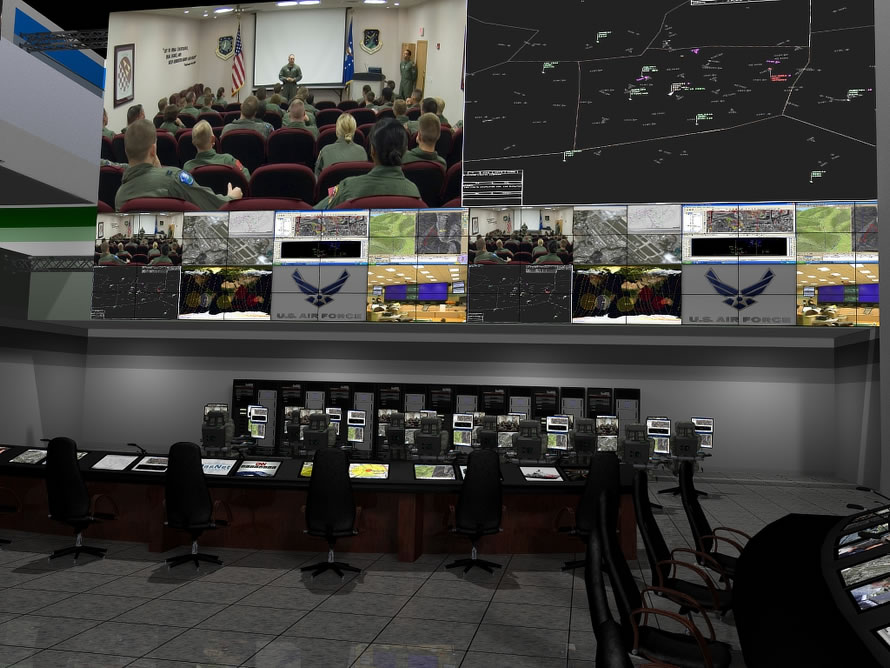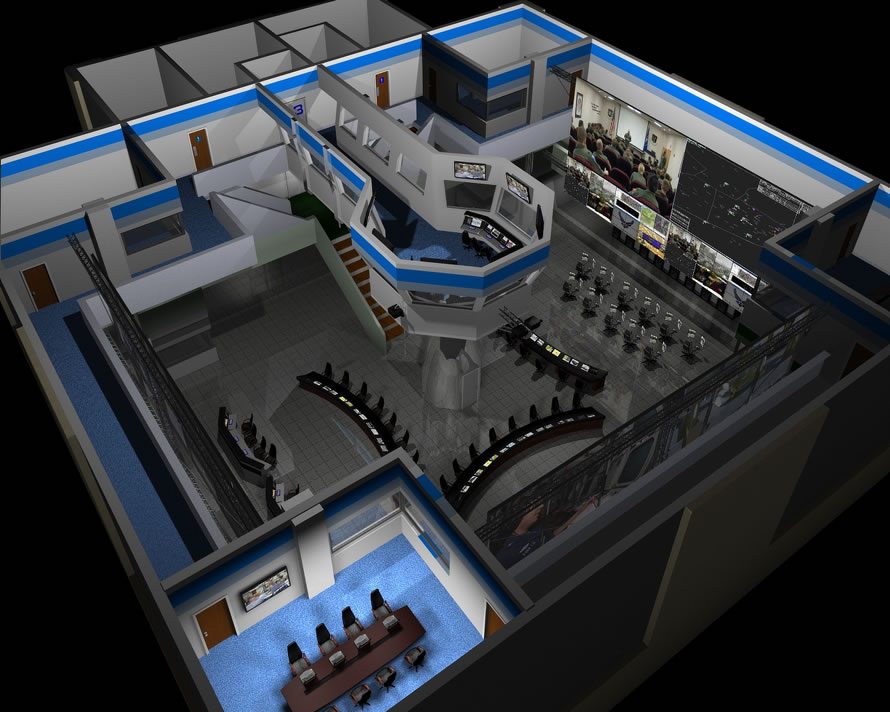- Command Center Solutions
- Infrastructure Solutions
- Unified Communications Solutions (UCS)
- Visual Communications
- Virtualization Solutions
- Enterprise Storage Solutions
- Satellite Communications
- Microwave Communications
- Deployable Communications
Command Center Solutions
Data collaboration among key decision makers in commercial and military environments is critical. Increasing the effectiveness of the command, control, communications, computers and intelligence (C4I) tools available to leaders is an intrinsic element that resonates from DasNet’s core – Systems Engineering. DasNet provides design, engineering, acquisition and implementation of strategic voice, data and video systems for executives and commanders.
 Key decision makers in commercial and military environments need data collaboration facilities and tools, such as emergency action reporting systems, crisis action systems, and battle staff displays. Utilizing our Program Engineering Model, DasNet designs, integrates, installs, tests and commissions an array of data-audio-video systems that can range from the simplest conference room to complex command and control infrastructures. DasNet creates the network and visualization infrastructures in command centers, such as Air Support Operations Centers (ASOCs), Emergency Operations Centers (EOCs), Tactical Operations Centers (TOCs), Topographic or Map Centers, Analysis and Control Element Operations Pit, ACE Imagery Intelligence Pit, Multidiscipline Counterintelligence Room and Collection Management and Dissemination Room.
Key decision makers in commercial and military environments need data collaboration facilities and tools, such as emergency action reporting systems, crisis action systems, and battle staff displays. Utilizing our Program Engineering Model, DasNet designs, integrates, installs, tests and commissions an array of data-audio-video systems that can range from the simplest conference room to complex command and control infrastructures. DasNet creates the network and visualization infrastructures in command centers, such as Air Support Operations Centers (ASOCs), Emergency Operations Centers (EOCs), Tactical Operations Centers (TOCs), Topographic or Map Centers, Analysis and Control Element Operations Pit, ACE Imagery Intelligence Pit, Multidiscipline Counterintelligence Room and Collection Management and Dissemination Room.
DasNet’s command center solutions offer a broad range of audio and visual technologies.

- Video Wall Systems. Also referred to as data wall and knowledge wall, it is widely used in Network Operations Centers (NOC), Tactical Operations Center (TOC), Emergency Operations Centers (EOC), security, and entertainment. Video wall systems are used to display multiple images, such as VTC near-end, far-end, DVD, VCR, CATV, CCTV, and computer graphics. A single image can be displayed on one panel, or across multiple panels. Any source is selected through touch panel displays or front panel control.
- Video Teleconferencing. DasNet designs and deploys secure and non-secure VTC endpoints and bridges. Our VTC endpoint terminals and bridges support both ISDN and IP networks. Secure VTC terminals are built with DVS II certified network and dial isolation switches, automatic sanitation capabilities, and data collaboration (slides presentation).
- Data Collaboration Features. Part of our command center solution is the capability to share a common operating picture among commanders, whether they are collocated or geographically separated. Here, we use Smart Technologies’ data collaboration products such as the Smart Whiteboard and Sympodium.
- Audio Systems. In a small conference room, a couple of microphones and speakers suffice. In larger installations where local reinforcement audio is required and a high probability of feedback, the placement and configuration of microphones and speakers are important. Our solution groups the microphones and speakers into zones, sending audio only to different zones (i.e., Zone 1 microphones are mixed and sent to all speaker zones, except Zone 1). An added feature to our audio solutions is the capability to patch a remote participant into a conference call through the PSTN or DSN telephone networks or HF/VHF/UHF transceiver systems. We offer a wide range of professional microphones, mixers, amplifiers and speakers from industry leaders such as Shure, Lectrosonics, QSC Audio and JBL Professional Audio.
- Matrix Switchers. In any situation, command center operators want the capability to easily route any image source to any number of displays or recorders. Our solution complements the matrix switching capabilities of Extron and AMX switchers with customized touch panel control systems, which simplifies the selection and routing of images.
- Video Follow Audio Feature. In a medium to large command center, there is the need to automatically pan the camera to the person talking and feed this video to the local display, or push it to the distant-end during a VTC call. Our “video-follow-audio” solution does not pan to an audio source until two conditions are met, preventing unnecessary switching of active video. Microphone positions are pre-programmed during installation, but can be modified by the user through a user friendly interface on a touch panel display.
- Touch Panel Control System. Each audio and video component has its unique method of control. Whether it be dry contact, serial (RS232/422/485), infrared or Ethernet, operating and controlling a number of these components pose a challenge. We solve this problem by designing a customized touch panel system providing each operator a single device to operate and control the whole system. Our touch panel system solutions utilize industry leading technologies from AMX and Crestron. We have an in-house team of developers who work closely with our systems engineers. Our test facility affords us the capability to enhance our custom solutions, applying lessons learned on previous deployments.
- Local Area Network Access. In a single network environment, computers are either on the operator location or on central location. However, in a multiclass network environment where non-secure and secure processing equipment must be separated by up to 1m (3.28’), the challenges are obvious. Our response to these challenges is a design that conforms to black and red installation guidelines, and increased operator efficiency. Our solution provides multiple network access from one position.
- Telephone Communications. Part of our unified communications solutions, DasNet can engineer and deploy both legacy (POTS/TDM) and IP telephony systems for the command center. Whether it is an expansion, upgrade, or new installation, DasNet is experienced to support it.